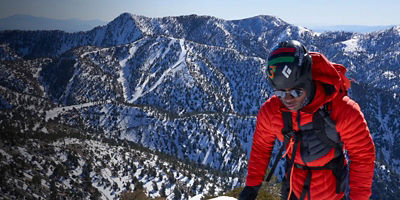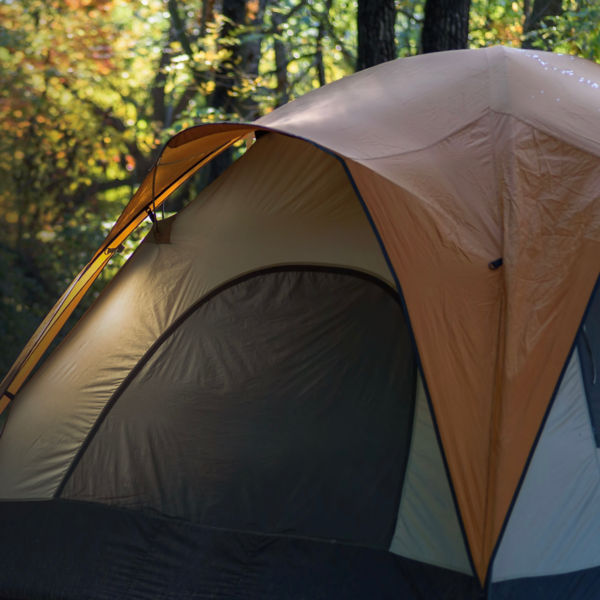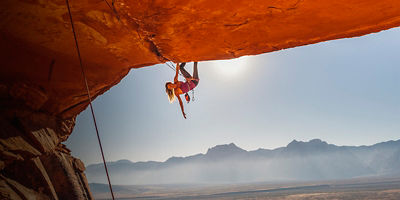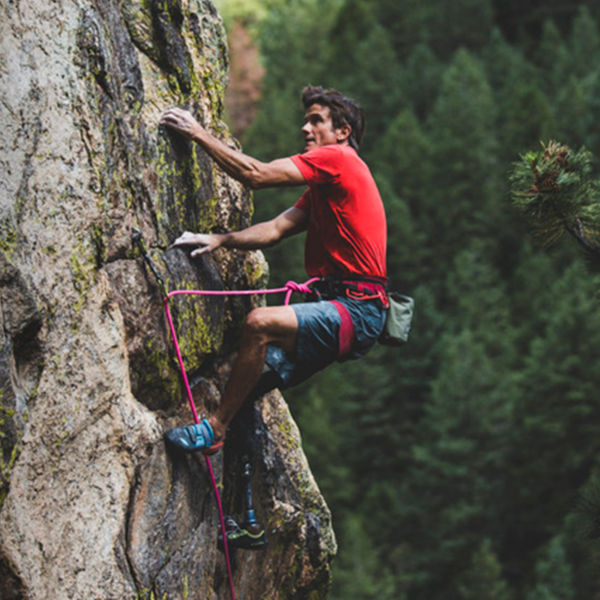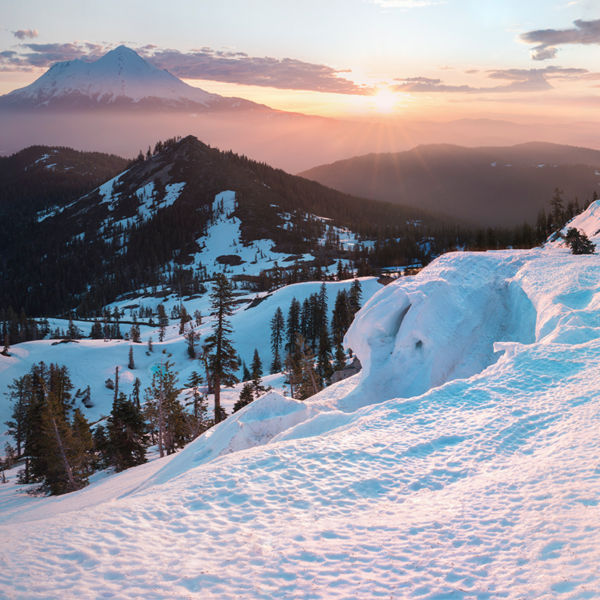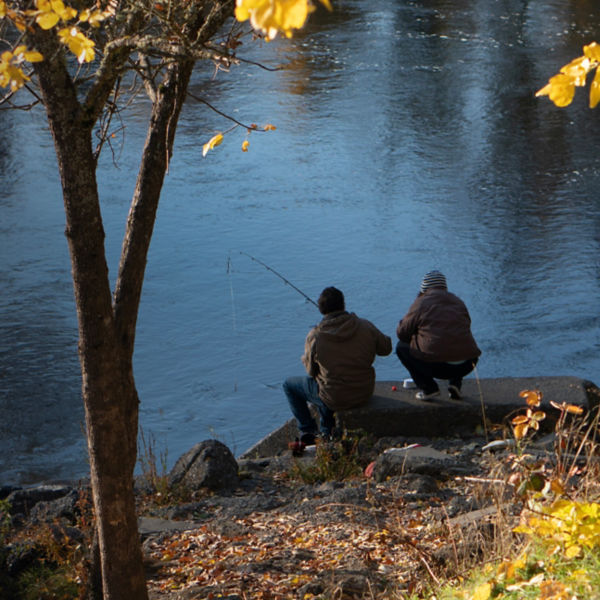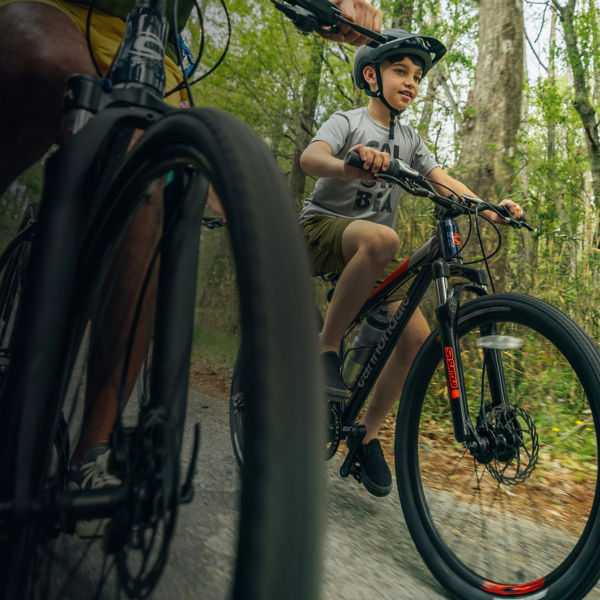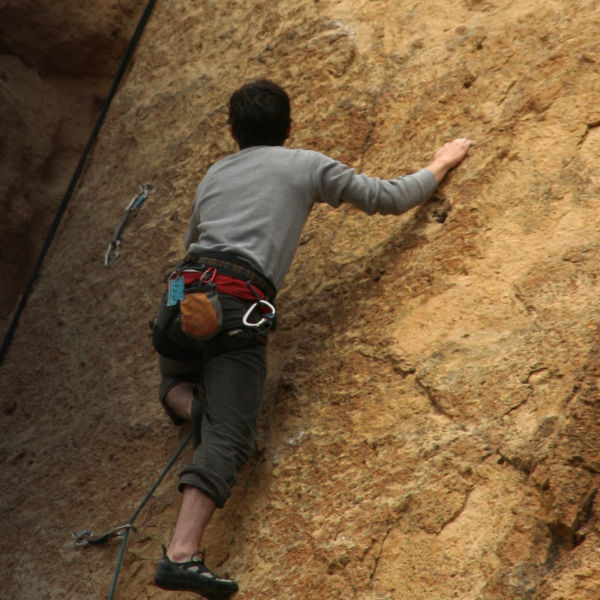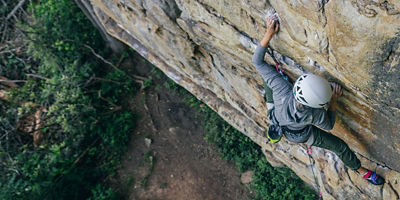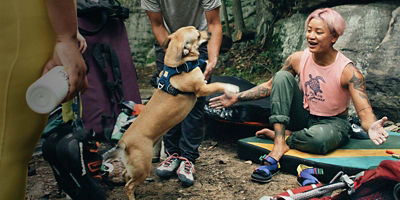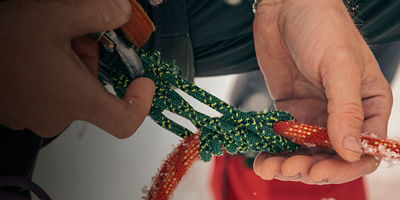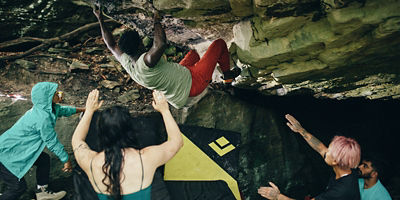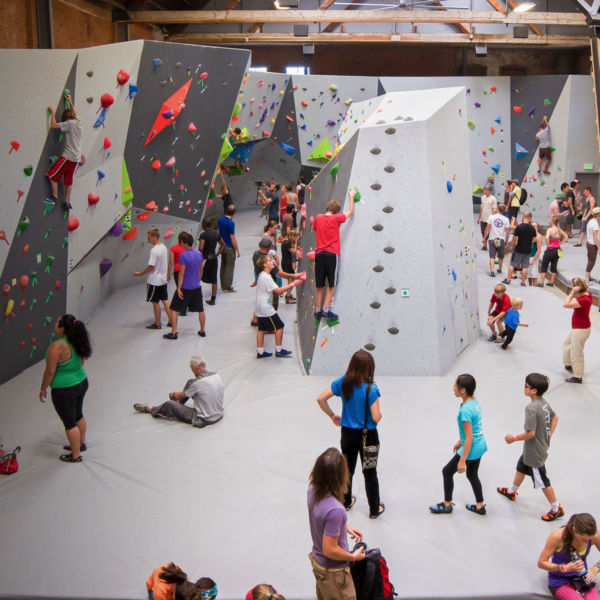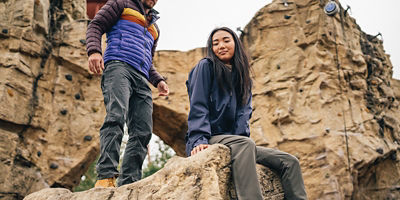
Castle Crags State Park has it all: Yosemite-like granite, pristine mountain views, and routes up to 1,000 feet long—all just 2 hours from Medford, Ore. For a southern Oregon trad climber, there’s no better place to practice your skills.
It’s also hard to beat the setting. Much of the land—historically the home of the Okwanuchu, Shasta, and Wintu peoples—is deeply forested, the ridge crowned by a silvery granite monolith. The monolith’s unique, crenelated silhouette is a product of the region’s geology: The rock here was forged underground more than 170 million years ago. The result was a mass of solidified magma then eroded into the toothy spires you see today.
Another benefit of all those geological forces? Dozens of climbable routes in a vast array of styles—from continuous cracks to friction slab to endless vertical face climbing.
Recommended Climbs
There are over 60 established routes in the Castle Crags area. Here are just a few of the classics.
Cosmic Wall (5.6R, 6 pitches)
Though protection can be sparse here, the Cosmic Wall offers the easiest route to the top of Mount Hubris. Follow a series of corners, ramps, and slabs to the top.
Six-Toe Crack (5.8+, 2 pitches)
Fun climbing, high-quality rock, and great gear placements make this two-pitch crack system a must-do for leaders of all ability levels. The only catch? There’s a short off-width section; bring at least one #4.
The Dike Route (5.10d, 8 pitches)
Over a thousand feet long and of stunningly high quality, the Dike Route ascends the full east face of Castle Dome. You’ll find decent protection around the cruxes but some run-out terrain on the more moderate pitches, making this route suitable for experienced leaders.
Seasons
The popular walls at Castle Crags are all south-facing and therefore get plenty of sun. They tend to melt out by early May and stay free of snow into October.
Spring
While snow flurries are possible in early spring, May is typically a great time to visit Castle Crags. Expect to encounter mild temperatures, plenty of sun, and blooming wildflowers.
Summer
Warm weather brings the crowds—and leaves the south-facing rock frying pan-hot. If you do visit during July or August, start early, stick to shorter routes, and bring plenty of water.
Fall
September and October are among the best months to visit the park. Just keep an eye on the nightly lows if you plan to camp; at high elevation, a warm sleeping bag is a must.










